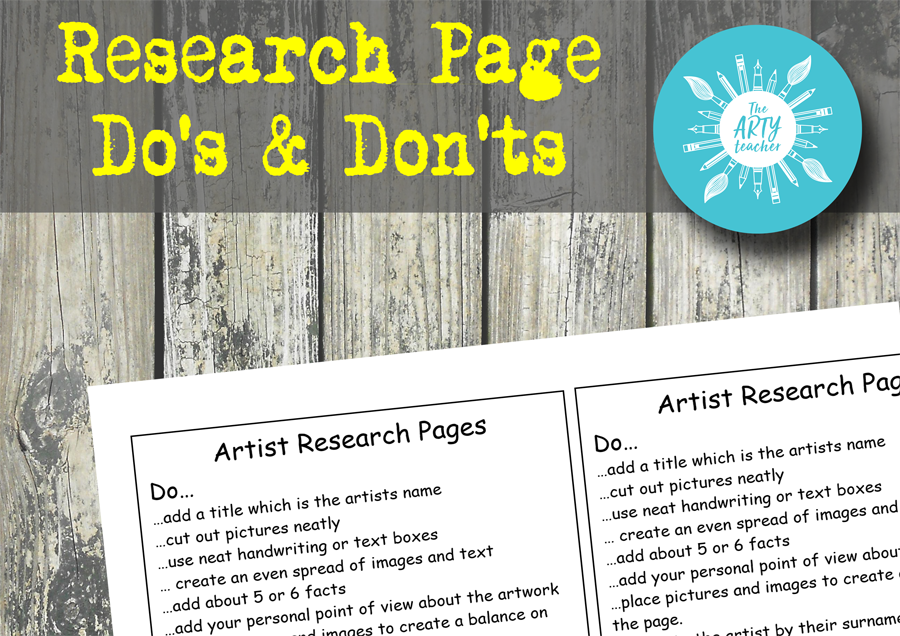
What Does a Good Art Interview Lesson Look Like?
What does a good interview lesson look like? I frequently see art teachers on social media, asking each other what to deliver when they have an interview art lesson.
Here in the UK, part of the interview process to secure an art teaching position is to teach a lesson whilst observed by your potential employers. You would also have a panel interview and possibly some ‘meet the department’ time, which you should also assume is part of the interview.
It is a good idea to ask others and see what is currently an education ‘hot potato’ as it is clear that now and then a new teaching methodology becomes fashionable (or an old methodology is regurgitated and renamed) and it would be a good idea to include it in your lesson.
I was recently asked to observe several art interview lessons as my school was recruiting for a new art teacher. One of the lessons I observed was truly superb, and I wanted to share all the great things this art teacher did with you. It has made me realise that it doesn’t really matter what you teach about as long as you give those who are observing you lots of great things to write down.
I observed a year 12 lesson, and the candidate was given a very open brief. They were told that the students had started their Personal Investigation* and that they should run a workshop to teach them a skill. This allowed candidates to work to their strengths and deliver something they were comfortable with.
*The Personal Investigation in the UK is a large project that students undertake at about the age of 17. It is self-directed, independent learning.
The following is what the candidate did, and they are all things you could plan to include in an interview lesson. Much of this is stating the obvious; however, as some candidates didn’t include some of the following, I think it is worth mentioning. It was a 50-minute lesson.
Prepare Excellent Resources.
The candidate had prepared a beautifully presented PowerPoint and handout. They also had excellent examples of what they wanted students to complete. (WAGOLL – What A Good One Looks Like) These resources provided evidence of many of the things below.
State the Lesson Objective
This is, of course, common sense. The lesson objective was clear on the PowerPoint and the candidate made it clear verbally to students.
Prior Knowledge
Through questioning, the candidate gained an idea of students’ prior knowledge of the techniques and media they would be using.
Demonstration
The candidate demonstrated what they would like students to do by going through the process themselves. This evidenced their practical skills and their ability to break tasks down at an appropriate level.
Elements of Art
The candidate referenced the elements of art by asking students which elements were included in the task. The elements of art involved in the task were then on the next slide of the PowerPoint.
Linking to the assessment objectives
The lesson included different stages, and before each stage, the candidate made it clear which assessment objective(s) it linked to. This clearly evidenced their knowledge of the specification.
Art Literacy
The PowerPoint and handouts highlighted subject-specific language. A simple thing but it ticks a box.
Working one-to-one with students
Whilst the students carried out the tasks, the candidate went around and spoke to them individually, talking to them about their Personal Investigation and advising them on the task. This demonstrated their ability to build a rapport with students.
Self-Assessment & Annotation
After students had completed a stage of the lesson, the candidate asked students to self assess and annotate. This linked to the assessment objectives and happened three times during the 50-minute lesson.
Praise and Positivity
The candidate was positive throughout the lesson. They were enthusiastic about what they had planned. This was apparent in their body language and tone of voice. They responded positively to conversations with students and the work they were creating. In addition, the candidate held up a student’s work to highlight success and raise attainment.
Further Learning
At the end of the PowerPoint and handout, the candidate provided several sources where students could further their learning. I thought this was a nice touch and further evidenced their subject knowledge.
You’ll Love These Other Posts:
Popular Art Lessons:
This post has been included by Twinkl in their blog on Teacher Interviews
If you have enjoyed this blog post on ‘What Does a Good Art Interview Lesson Look Like?’ why not register to receive my weekly newsletter? Just click the image below.











HI there, we are interviewing for an art and design teacher at a special school and I wondered if you had any suggestion for what the brief could be for the interview task. I want it to be open if possible where they are using lots of techniques/materials etc.
It doesn’t matter what you ask them to do as long as they evidence many of the things outlined in the following blog post:
https://theartyteacher.com/what-does-a-good-art-interview-lesson-look-like/
If you’re keen on seeing the use of lots of techniques and materials, why not ask them to deliver a mixed media lesson that links to an artist?
Good points ! I found this very helpful as I am wondering what would be a good demo lesson and more…
I’m pleased to read that you found it helpful. I do have a blog post about demonstrations which you may find of interest: https://theartyteacher.com/how-to-give-a-good-demonstration-in-art/
Thank you – this was very informative!
I’m glad you found this useful.
This was so helpful to read, thank you!! I have some upcoming job interviews that will be conducted virtually. I know I can’t apply all your tips but I can certainly be sure to tick a few of the boxes!
Hi Lili, Thanks for your comment. I’m glad you found it useful.